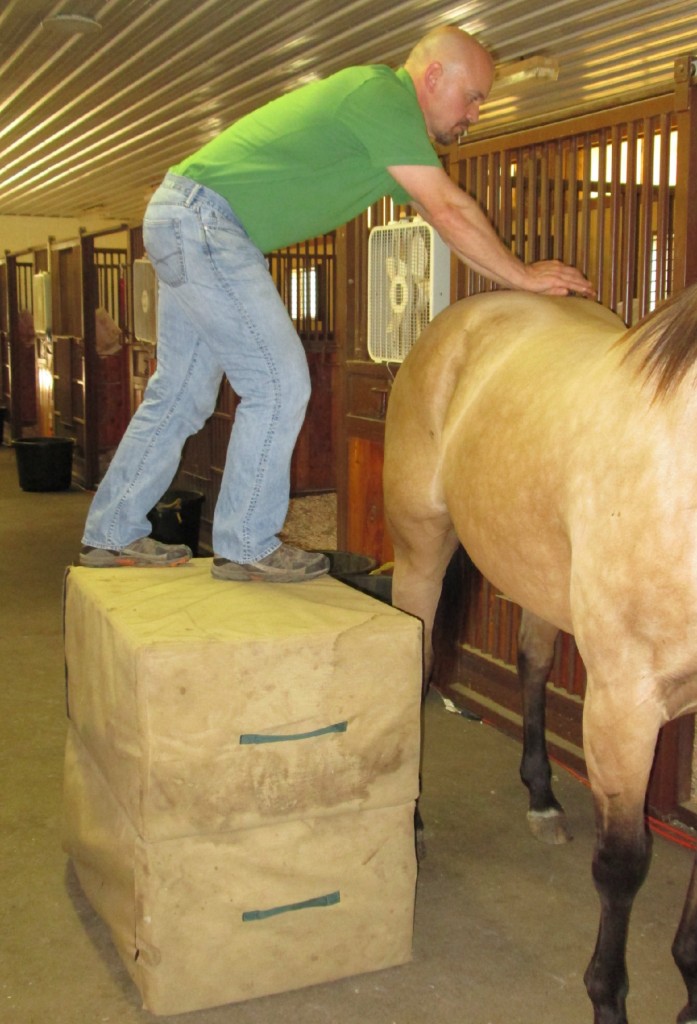Chiropractic Care
What is Animal Chiropractic?
Animal Chiropractic is a field of animal health care that focuses on the preservation and health of the neuro-musculo-skeletal system. Why? Nerves control everything that happens in your animals. Anything adversely affecting the nervous system will have detrimental effects that will resonate throughout the entire body. The command centers of the nervous system are the brain and spinal cord which are protected by the spine. The spine is a complex framework of bones (vertebra), ligaments, muscles and nerves. If the movement and bio mechanics of the vertebra become dysfunctional, they can interfere with the performance of the nerves that are branching off of the spinal cord and going to the all of the muscles and organs. As this occurs, your animal can lose normal mobility; resulting in stiffness, tension, pain and even organ dysfunction. Additionally, when normal movement is affected, and left unattended, it will ultimately impact your animal’s entire well being and quality of life.
 The nervous system also coordinates the body’s ability to heal and regulate itself. Trauma, overuse, or underuse, may cause the vertebra of the spine to become fixed, and the surrounding muscles and ligaments may become compromised and inflamed. Nerves could become trapped in these damaged tissues, or in the passages they use to exit the spine. Their signals become unable to adequately reach their destinations. When they don’t, these impaired structures lose their ability to heal. This can directly and dramatically impact your animal’s health.
The nervous system also coordinates the body’s ability to heal and regulate itself. Trauma, overuse, or underuse, may cause the vertebra of the spine to become fixed, and the surrounding muscles and ligaments may become compromised and inflamed. Nerves could become trapped in these damaged tissues, or in the passages they use to exit the spine. Their signals become unable to adequately reach their destinations. When they don’t, these impaired structures lose their ability to heal. This can directly and dramatically impact your animal’s health.
Symptoms of spinal fixation are vast, and may include pain, spasm, sensitivity to touch, lameness, gait abnormalities and postural compromise. These are the symptoms that are the easiest to detect. It may take a trained doctor to distinguish some of the more subtle changes that occur when organs begin to malfunction.
The goal of an animal chiropractor is to restore function and mobility to the compromised vertebra in an effort to re-establish neurologic transmissions. This allows the body to perform at its optimum potential. These doctors use their hands to identify areas of restriction; and once identified, the animal chiropractor applies a precise thrust on the immobile anatomical structures. This treatment restores the normal motion of the vertebra thus removing neurological interference. When the nerves can efficiently communicate with all the structures in your animals’ bodies, they will begin to heal from within.
Animal Chiropractic is not meant to replace traditional veterinary care. It is not an alternative treatment, but rather an integrative method that when used in conjunction with good traditional veterinary care, will provide years of happy and healthy living. This is the beginning of a more modern, comprehensive approach to your animal’s healthcare. It is an effective and valuable means of restoring and maintaining their strength, vigor and well-being. And by exploring and treating the root causes of your animal’s aches, pains and illnesses, will ensure maximum improvement, top performance and an exceptional quality of life for the animal companions we love.
SIGNS AND SYMPTOMS
You love your horse; and as a conscientious owner, you want to keep them healthy and protect their well being. Owning a horse is a responsibility which requires continual observation, management, and occasionally the ability to detect unusual behaviors which may reveal signs of illness or injury. Because your horse communicates in a language other than words, they must rely on your capacity to observe and distinguish the subtle changes in their behavior which might indicate a warning sign for health concerns.
Since not all behavioral changes are cause for concern, the following list of Signs and Symptoms will help you identify what to watch for to protect your horse and ensure a healthy and vigorous life.
- Pain and stiffness when moving or being touched
- Reduced performance
- Negative changes in behavior or attitude
- Abnormal gait, shortened stride or lameness
- Inability or difficulty in taking a lead
- Bucking
- Difficulty or inability to collect
- Pinning ears or snapping when being cinched
- Difficulty flexing at poll
- Changes in posture
- Resistance to being ridden
Disclaimer
It should be emphasized that this list is a basic overview, and does not cover every sign and symptom an animal may exhibit. The purpose is to highlight the most commonly seen signs and symptoms in the hope of offering guidelines to help the pet owner to recognize potential disorders. This is in no way an attempt to diagnose and/or treat any specific disease or condition. If a pet is demonstrating any unusual symptoms or behaviors, the owner should consult their animal’s health care provider without delay.
The above information is courtesy of the Options for Animals website with permission. Options for Animals is one of only 3 accredited chiropractic schools in the United States.
